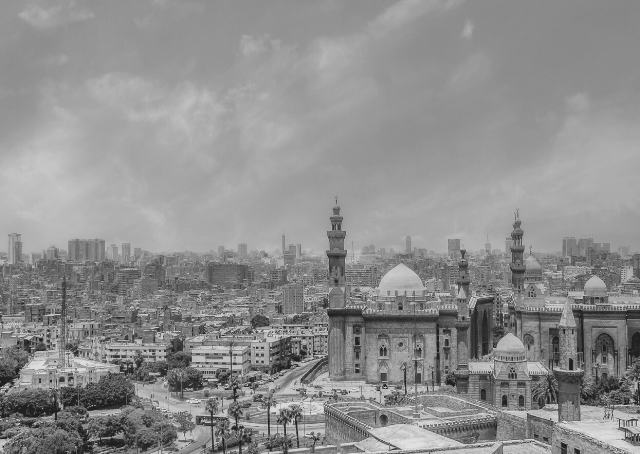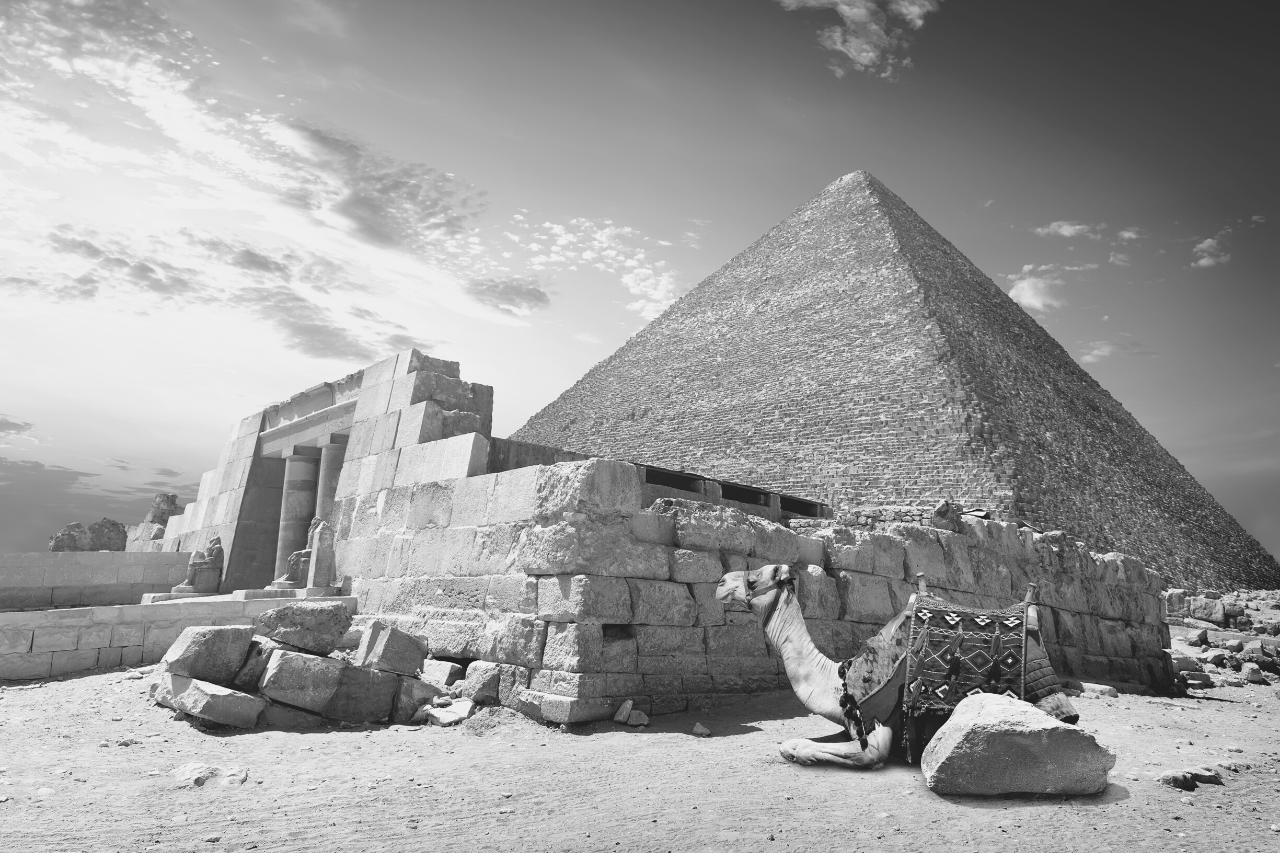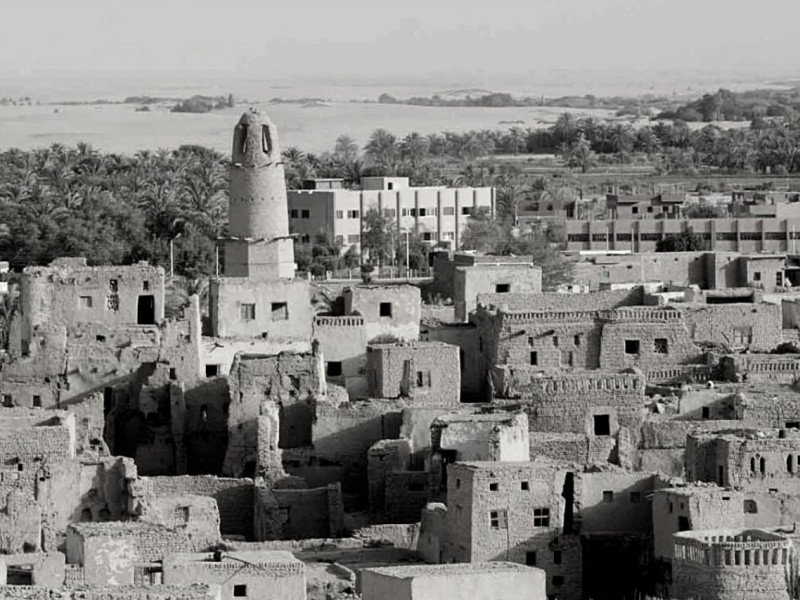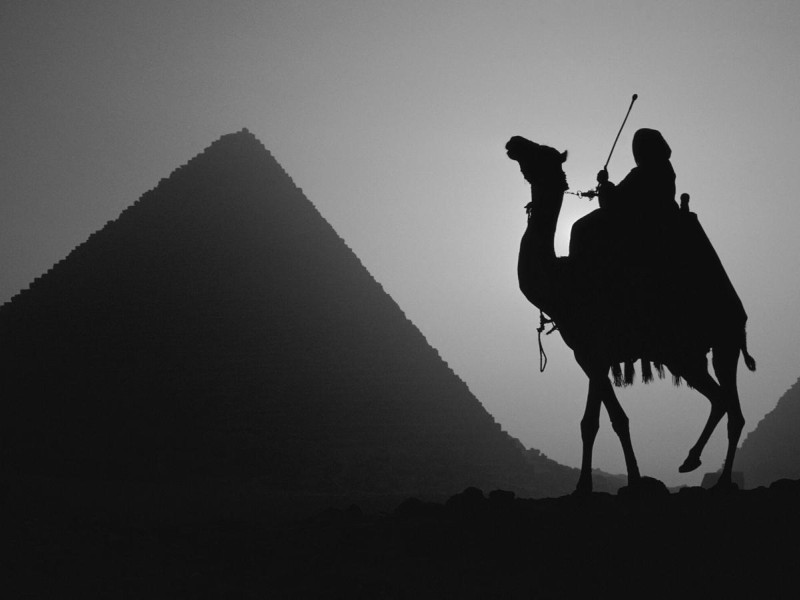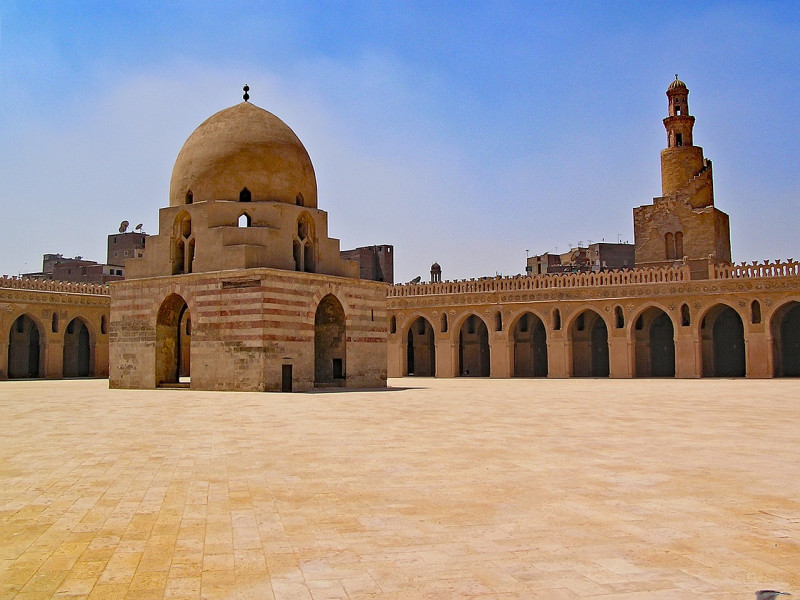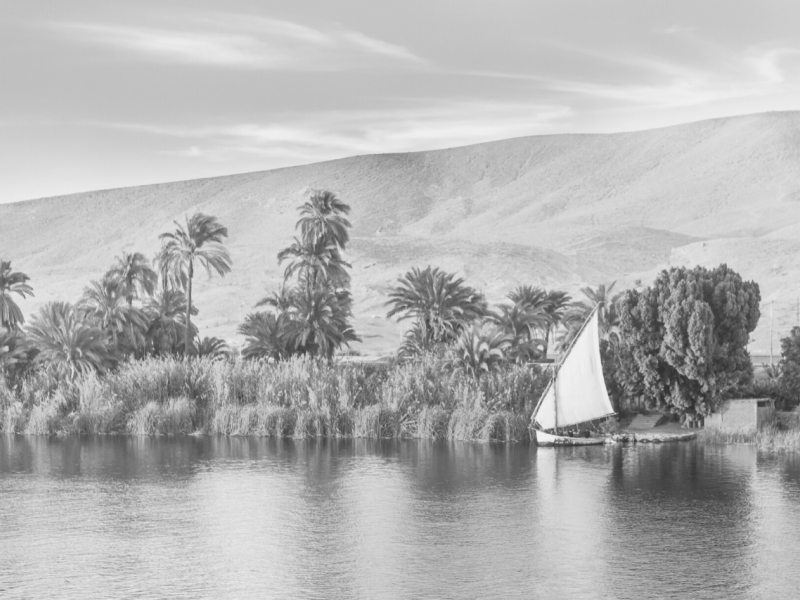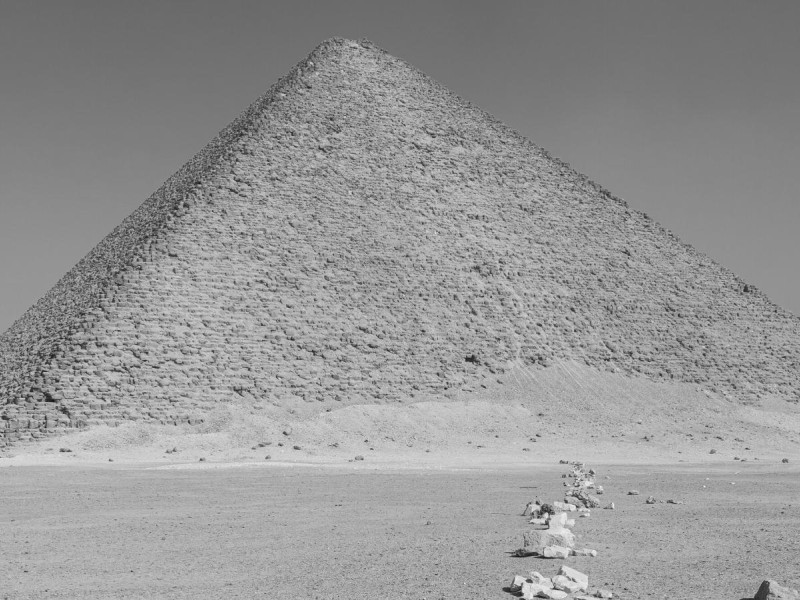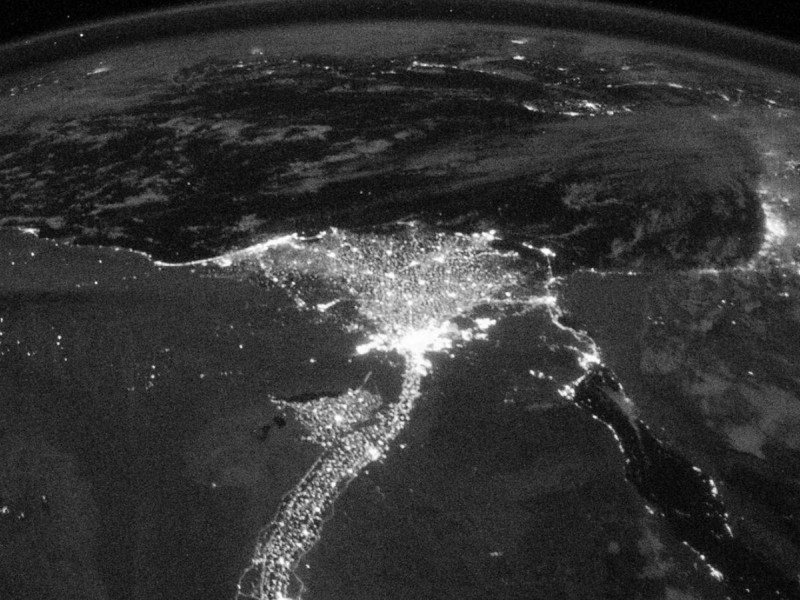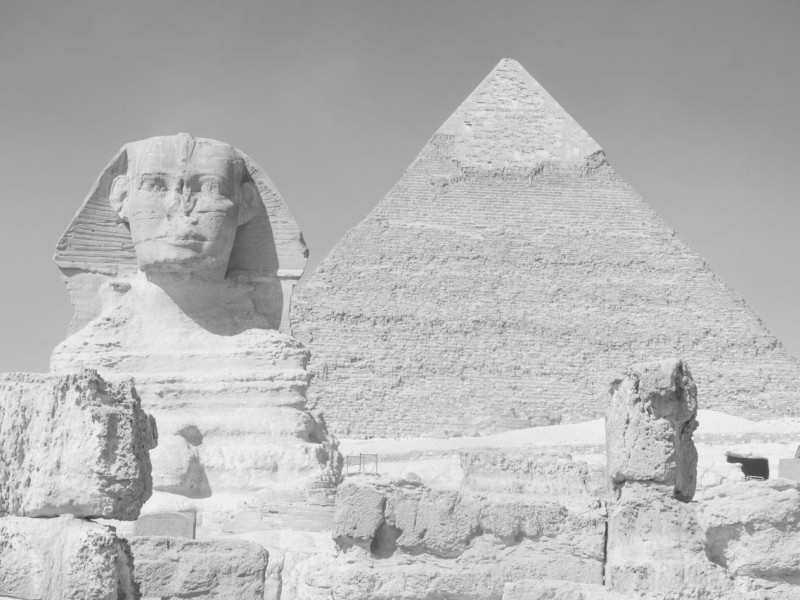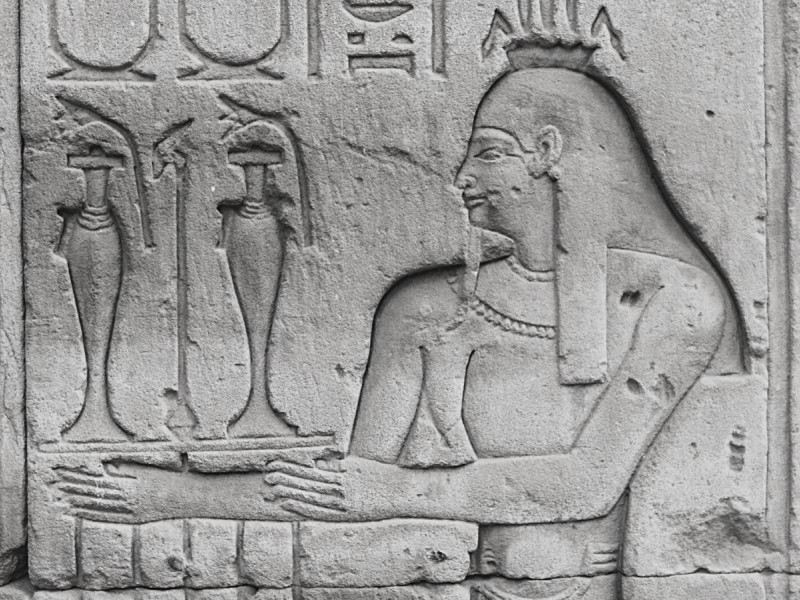Cairo History: The Ancient “Victorious” City of the Nile
Cairo's history is well known and mysterious to nearly anyone who has ever seen a picture of the pyramids.
Have you ever wondered how the ancient city of Cairo came to be? We detail everything you need to know about how old Cairo is and explain Cairo’s name in ancient Egypt.
Known today for being the capital of Egypt, occupying nearly 328 miles (528 kilometers) along the Nile Delta, Cairo is the largest metropolitan area in Africa.
Officially founded in 969 CE by the Fatimid Dynasty (909-1171), the ancient city can trace its origins to the early 4th millennium BCE when it served as the Egyptian capital to the pharaohs and was named Memphis.
History of Cairo: Resting Place of the Ancient Pharaohs
When you picture Cairo in your head, the first thing you can picture is the Pyramids at Giza, located just outside the capital city.
These massive structures comprising the ancient Cairo you imagine were temples constructed to stand guard over those interred within them. The area occupying the present-day capital of Egypt is rich in ancient history.
Ancient Cairo was the final resting place to a chain of pharaohs, harboring and protecting the riches and mysteries of their ancient times for centuries.
“Egypt is the gift of the Nile” – Herodotus
The Nile River
Cairo’s iconic historical development is directly related to the Nile River. Acting as the main water source for the region’s agriculture, the Nile provides a lifeline for crops to cultivate and thrive in the region. Economically the Nile was an important trade route, providing transportation and trade to the Nile River Valley during the days of the Pharaohs.
Ancient Egyptians dictated their living patterns based on the Nile. Houses and villages were constructed on the east side of the river where the sun rose because the sun rises on life. On the west side of the river, where the sun sets, were the temples and monuments constructed to mourn as a sunset symbolizes death.
Ancient Egyptian history notes that Egypt was once divided into Upper and Lower Egypt. The first Pharaoh Menes (3200-3000 BCE) united the two by constructing his capital on the border to indicate peace and unity. The city constructed by Menes was called Memphis and was located southwest of the contemporary city of Cairo.
Stretching along the east bank of the river, the city of Memphis strategically commanded economic and political power in the region.
How Old Is Cairo? Origins of the Ancient City
The mammoth of a city we know today is more than 25 centuries old. The ancient city of Cairo can trace its historical origins to 641 BCE. The city’s history begins with the Arab conquest of Egypt in 640, 3 centuries before the founding of al-Qahira (Cairo) by the Fatimid Dynasty. Over nearly 6 centuries, the city of Cairo formed to be the mammoth of a capitol it is known for today.
When Persian Emperor Darius the Great (550 BCE- 486 BCE) conquered Egypt circa 500 BCE, he constructed a canal that linked a branch of the Nile River to the Red Sea, approximately 82 feet (25 meters) wide the journey took 4 days by barge to reach the Red Sea from Egypt.
Roman emperor Trajan (53 – 117 CE) continued Darius’s work, and in 100 CE, he extended the canal upstream, constructing a fortress and small settlement called Babylon. The area encompassing Babylon became the city of Cairo. Trajan finished the canal successfully linking the Nile to the Red Sea and named it for himself as Amnis Traianus or the River of Trajan.
Fustat as Egypt’s Capital
In 641 CE, Muslim general Amr ibn al-As (573 CE – 664 CE) conquered Egypt. Legends of the conquest detail that general Amr ibn al-As chose the country’s new capital based on where a dove had laid an egg on his tent before he was about to invade Alexandria.
The location of the general’s camp was north of the Roman fortress called Babylon and became the first Muslim-ruled capital of Egypt. The Mosque of Amr ibn al-As was constructed in 642 CE near the general’s tent, the first mosque built in Egypt.
Fustat ruled as the capital of Egypt from 641 to 750 CE and was a powerful city in the region. By the year 800 CE, the population comprised nearly 120,000 people. However, Egypt remained a strategic target in ongoing conquests in the middle east.
In 969 CE, General Gawhar (d. 992) of the Fatimid Dynasty captured Egypt and removed the capital just north of Fustat. The Fatimid named the new capital of Egypt Al-Qahira (Cairo), meaning “the victorious.”
Throughout their two-and-a-half century reign, the Fatimid united their strongholds in North Africa and expanded their ambitions to conquer the holy cities of Mecca, Medina, and Yemen.
The imperial capital built at Cairo in 969 CE ushered the Fatimid Dynasty into unprecedented growth by connecting the Red Sea to merchant trade routes in the Mediterranean and those of the Indian Ocean.
During that time, Cairo became a center of education and learning and featured the library of Cairo, containing several hundred thousand books.
Fustat remained a thriving city just south of the newly established capital of Egypt. The Crusades initiated their campaign to overtake Egypt and weaken the Fatimid Dynasty in 1163. In 1168, the Fatimid burned down the economically thriving city of Fustat to throw off the crusaders from invading nearby Cairo.
In 1169, the Fatimid appointed Saladin to rule over Egypt, where he established the Ayyubid dynasty. Saladin constructed the Cairo Citadel, the center of all Egyptian government. Cairo had grown to become a thriving trading center and, by 1340, held a population of approximately 500,000.
“Worse than any seen before in the Islamic world” – Al- Maqrizi, historian
The Bubonic Plague
The Bubonic Plague or Black Death reached the ancient city and showed Cairo as little mercy as it had the rest of the world. 15th-century Egyptian historian and chronicler al Maqrizi noted that the plague arrived in Egypt when a ship drifted into Alexandria in 1347 CE carrying the corpses of the entire crew.
Al-Maqrizi’s writings detail that the Plague claimed 7,000 dead per day by the year 1348. Between 1348 and 1517, the Bubonic Plague devastated the capital of Egypt. Over 200,000 people died from the plague and it severely diminished the population.
The Ottoman Empire conquered Cairo in 1517 and remained in power until 1798 when Napoleon Bonaparte (1769-1821) of France captured the city. The Ottomans were restored by the early 19th century. However, debt from receiving foreign aid in defeating the French crippled the city. European influence soon saturated the city’s landscape.
Viceroy Ismail Pasha (1830-1895) ruled Cairo from 1863 to 1879 and embraced European architecture in the city, furthering the city’s debt to foreign entities. The 1869 completion of the Suez Canal was Pasha’s idea of showing European powers that Cairo was essential to international trade.
Financial vulnerability eventually led to Cairo being controlled by Great Britain from 1882 until the first World War (1914-1918).
Egypt’s Independence
Protests for Egyptian Independence from British rule led to the Egyptian Revolution of 1919, culminating in the Egyptian declaration of independence in 1922. Britain’s colonial dominance continued until 1956 and was greatly diminished by the Egyptian revolution of 1952.
The new Egyptian Republic led by Gamal Abdel Nasser (1918-1970) ushered in urban renewal and development, public investment in transit, and general land reforms. By the early 1960s, the population of the city of Cairo grew to over seven million people.
In 1992 the ancient city of Cairo experienced an earthquake so severe it left nearly 50,000 people homeless and over 500 dead. Contemporarily, in 2011 the capital of Egypt was the center of the Egyptian Revolution to overthrow Hosni Mubarak (1928-2020). By the beginning of the 21st century, Cairo’s population exceeded 15 million.
As the commercial and industrial center of Egypt and the cultural capital of the Islamic world, the city is home to many famed historic landmarks and several cultural landmarks, including a sports stadium, an opera house, several renowned universities, an international film festival, and newspaper publications.
Conclusion
Cairo’s history is rich and full of inspiring events.
Here is a summary and interesting facts on Cairo:
Cairo’s climate is dry and desert for much of the year. Stifling humidity from the Nile River and windstorms bringing dust from the Sahara are common occurrences in the spring.
Of the Seven Wonders of the World, the Pyramid of Giza in Cairo is the only one to remain in existence.
The tallest structure in North Africa is in the city of Cairo. The Cairo Tower is a 614 feet tall concrete tower and was the tallest structure in Africa until 1971.
You can visit ancient Cairo’s origins at the oldest structure in the city, the Babylon fortress constructed in the 6th century.
The Pyramid of Giza is the tallest building in the world made by human hands before the Eiffel Tower. The pyramid took over 20 years to construct and is made of over two million stone blocks.
Now that you’ve learned a lot about Cairo’s history, please feel free to share this article with your family and friends. We are positive that they, too, will enjoy the wonders that this ancient city offers. Perhaps, one day, you might even consider visiting the place and witness its greatness unfold in real life.
